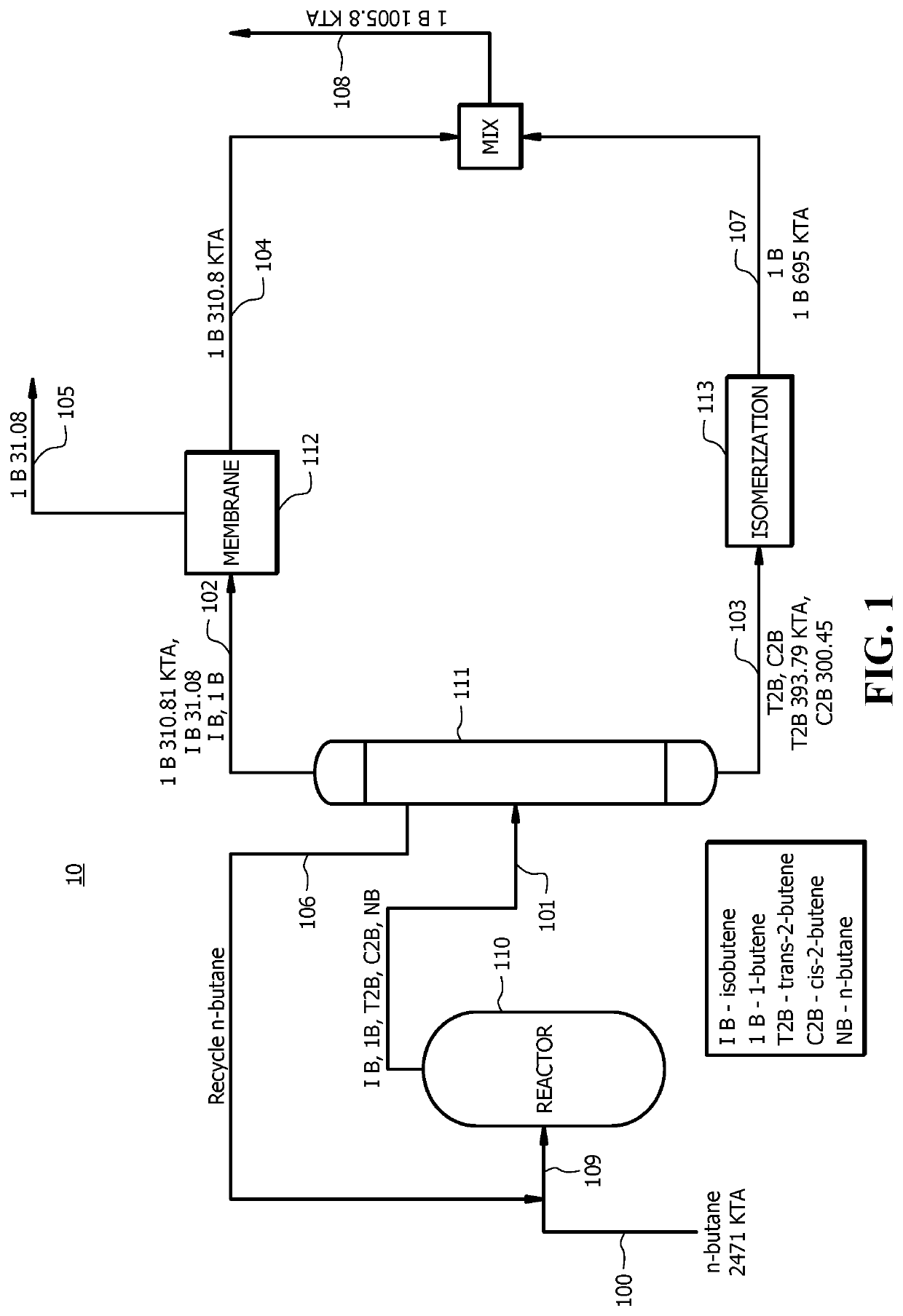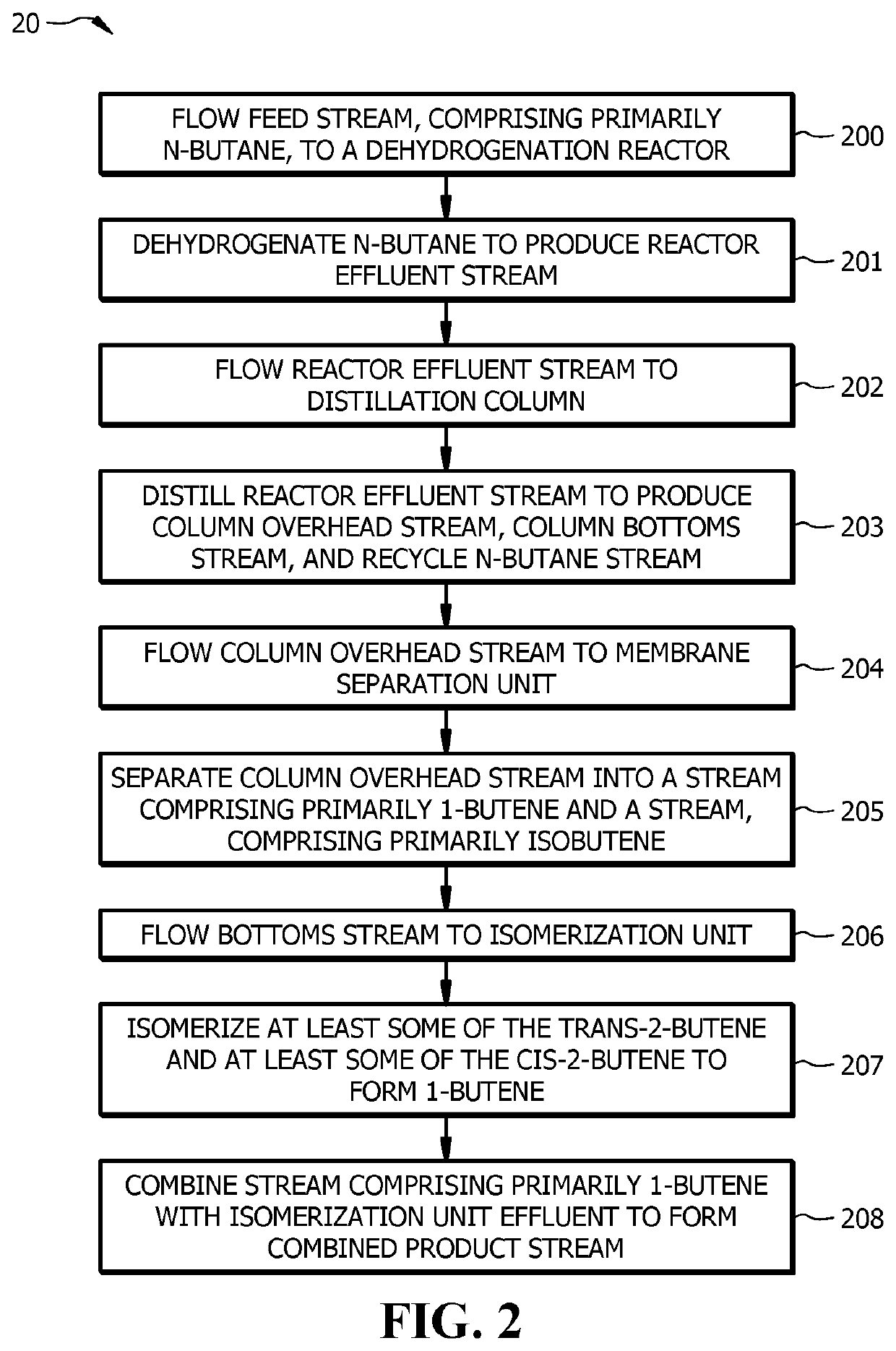Process for 1-butene production from n-butane dehydrogenation through efficient downstream separations
- Summary
- Abstract
- Description
- Claims
- Application Information
AI Technical Summary
Benefits of technology
Problems solved by technology
Method used
Image
Examples
Embodiment Construction
[0022]A method has been discovered for producing 1-butene at improved production capacity and purity as compared with conventional processes. In the discovered method, n-butane is dehydrogenated to form a mixture comprising butene isomers and unreacted n-butane. Unreacted n-butane is separated from this mixture. The unreacted n-butane from this separation process can be sent back as recycle to be dehydrogenated. Iso-butene and 1-butene recovered from the separation process is routed to a membrane to separate the iso-butene from 1-butene. A mixture of trans-2-butene and cis-2-butene from the separation process can be used as feedstock for an isomerization unit. In this isomerization unit, both trans-2-butene and cis-2-butene are converted to 1-butene.
[0023]FIG. 1 shows system 10 for producing 1-butene, according to embodiments of the invention. FIG. 2 shows method 20 for producing 1-butene, according to embodiments of the invention. Method 20 may be implemented with system 10. In emb...
PUM
| Property | Measurement | Unit |
|---|---|---|
| Temperature | aaaaa | aaaaa |
| Temperature | aaaaa | aaaaa |
| Temperature | aaaaa | aaaaa |
Abstract
Description
Claims
Application Information
 Login to View More
Login to View More - R&D
- Intellectual Property
- Life Sciences
- Materials
- Tech Scout
- Unparalleled Data Quality
- Higher Quality Content
- 60% Fewer Hallucinations
Browse by: Latest US Patents, China's latest patents, Technical Efficacy Thesaurus, Application Domain, Technology Topic, Popular Technical Reports.
© 2025 PatSnap. All rights reserved.Legal|Privacy policy|Modern Slavery Act Transparency Statement|Sitemap|About US| Contact US: help@patsnap.com


